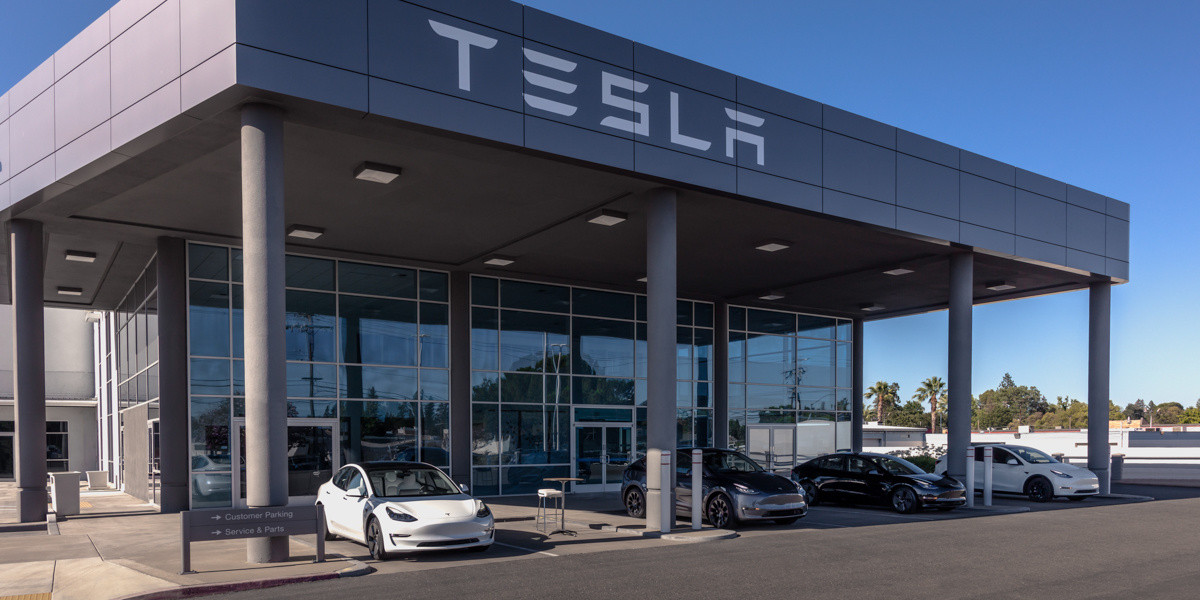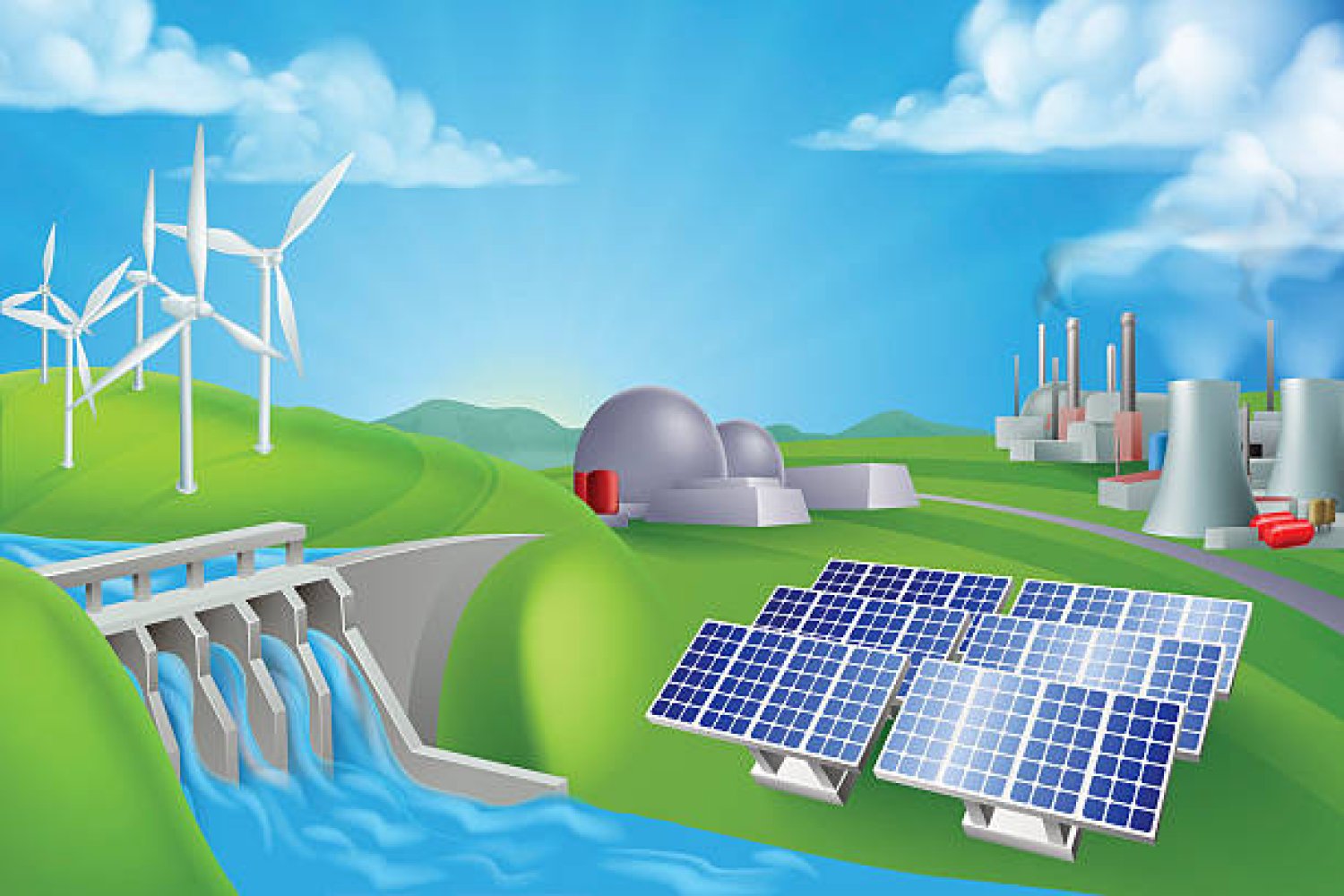Tesla unveils Megapack 3, Megablock battery storage systems as car business lags – Yahoo Finance

Report on Tesla’s Expansion in Energy Storage and Alignment with Sustainable Development Goals
1.0 Introduction: Strategic Shift Towards Sustainable Energy Infrastructure
Tesla, Inc. has announced a significant expansion of its energy storage division, introducing new large-scale battery systems. This strategic initiative, occurring amidst a downturn in the company’s automotive sales, underscores a deepening commitment to technologies that directly support the United Nations Sustainable Development Goals (SDGs), particularly in the realms of clean energy, sustainable infrastructure, and climate action.
2.0 New Product Unveiling and Technological Specifications
At a recent event, Tesla introduced two key products designed to advance grid-scale energy storage capabilities. These innovations are central to building resilient infrastructure (SDG 9) and ensuring access to clean energy (SDG 7).
- Megapack 3: An upgraded battery pack featuring enhanced power and efficiency.
- Megablock: A comprehensive, medium-voltage energy storage unit designed for rapid deployment.
2.1 Megapack 3 Enhancements
The Megapack 3 represents an incremental but important evolution in battery technology, contributing to more efficient energy systems.
- Increased Capacity: Power has been increased to 5 MWh, a significant improvement over the previous 3.9 MWh model.
- Simplified Design: The thermal bay for heat dissipation has been simplified, featuring 78% fewer connections, which enhances reliability and manufacturability.
- Advanced Cell Technology: Incorporates new cell technology with a diversified supply chain from the US, Southeast Asia, and China.
2.2 Megablock System Overview
The Megablock is an integrated solution engineered to accelerate the transition to renewable energy grids, directly addressing the objectives of SDG 7 and SDG 11 (Sustainable Cities and Communities).
- System Composition: Combines four Megapack batteries with transformers and switchgear into a single, all-in-one block.
- Performance and Longevity:
- Total storage capacity of 20 MWh.
- Designed for a 25-year operational life with over 10,000 charging cycles.
- Operational in extreme temperatures, from -40°C to 60°C.
- Installation and Cost Efficiency:
- Claimed to be 23% faster to install than equivalent systems.
- Reduces construction costs by up to 40%, making sustainable infrastructure more economically viable.
3.0 Contribution to Sustainable Development Goals (SDGs)
Tesla’s focus on energy storage provides a powerful tool for achieving global sustainability targets.
- SDG 7 (Affordable and Clean Energy): The primary contribution is enabling the storage of intermittent renewable energy from solar and wind sources. This allows for the delivery of clean power even when generation is low (e.g., at night), making the grid more stable and reducing reliance on fossil fuels.
- SDG 9 (Industry, Innovation, and Infrastructure): The Megablock and Megapack 3 represent critical innovations for building resilient, next-generation energy infrastructure. The planned construction of a new factory in Houston with a 50 GWh annual capacity further supports industrial development in the clean technology sector.
- SDG 11 (Sustainable Cities and Communities): These systems can provide stable power for municipalities, managing peak load demands and preventing grid failures. This enhances the sustainability and resilience of urban environments.
- SDG 13 (Climate Action): By facilitating a broader and more reliable adoption of renewable energy, large-scale battery storage is a fundamental technology in the global effort to decarbonize the energy sector and mitigate climate change.
4.0 Strategic and Economic Outlook
The expansion of the energy storage business is a key component of Tesla’s “Master Plan Part IV” and represents a significant area of growth. While the automotive division has faced challenges, the energy business reported a record gross profit of $846 million in Q2. The planned Houston factory, set to begin production in late 2026, will manufacture approximately 10,000 Megapack 3 units annually, scaling up the company’s impact on the global transition to sustainable energy.
Analysis of Sustainable Development Goals in the Article
1. Which SDGs are addressed or connected to the issues highlighted in the article?
The article on Tesla’s new energy storage products, the Megapack 3 and Megablock, connects to several Sustainable Development Goals (SDGs) by focusing on technological advancements in clean energy infrastructure.
- SDG 7: Affordable and Clean Energy: The core topic is large-scale battery storage, which is essential for making renewable energy sources like solar and wind more reliable and accessible. The article states that storage allows these installations to “offload excess energy when energy generation is highest and discharge that energy when generation is low.”
- SDG 9: Industry, Innovation, and Infrastructure: Tesla’s development of the Megapack 3 and Megablock represents significant innovation in energy technology. The article highlights the creation of new infrastructure, including a “new factory in the Houston area,” and improvements in efficiency, such as being “23% faster to install” with “40% lower construction costs.”
- SDG 11: Sustainable Cities and Communities: The technology is designed to improve the energy infrastructure of urban areas. The article mentions that these systems can provide power for “small municipalities up to larger cities” and help manage “high peak power usage” in regions like California and Texas, thereby enhancing the resilience and sustainability of urban energy grids.
- SDG 13: Climate Action: By enabling the storage and consistent use of renewable energy, these battery systems are a critical tool for reducing reliance on fossil fuels. This directly contributes to climate change mitigation efforts, addressing the intermittency issue of solar and wind power, which is a major barrier to their widespread adoption.
2. What specific targets under those SDGs can be identified based on the article’s content?
The article’s details on Tesla’s energy storage solutions align with several specific SDG targets.
-
Under SDG 7 (Affordable and Clean Energy):
- Target 7.2: By 2030, increase substantially the share of renewable energy in the global energy mix. The article directly supports this by describing how battery storage solves the intermittency problem of renewables. It explains that storage allows solar and wind installations to provide power even “when it is dark outside, and the wind is not blowing,” thus making them a more viable and substantial part of the energy mix.
- Target 7.b: By 2030, expand infrastructure and upgrade technology for supplying modern and sustainable energy services. Tesla’s Megablock is presented as an advanced, all-in-one power storage system that constitutes a major upgrade in technology for sustainable energy. The plan to build a new factory with an “annual manufacturing capacity of 50 GWh” signifies a significant expansion of this critical infrastructure.
-
Under SDG 9 (Industry, Innovation, and Infrastructure):
- Target 9.4: By 2030, upgrade infrastructure and retrofit industries to make them sustainable, with increased resource-use efficiency and greater adoption of clean and environmentally sound technologies. The Megablock is a clean technology designed to upgrade energy infrastructure. The article’s claims of being “23% faster to install” and having “40% lower construction costs” point directly to increased resource-use efficiency in building this sustainable infrastructure.
-
Under SDG 11 (Sustainable Cities and Communities):
- Target 11.b: By 2030, substantially increase the number of cities and human settlements adopting and implementing integrated policies and plans towards inclusion, resource efficiency, mitigation and adaptation to climate change, resilience to disasters. The article explains that the Megablock systems can be used to “offload excess energy when not needed and discharge extra energy during peak times without taking out an electric grid.” This enhances the resilience of cities’ energy systems to disasters and demand shocks, a key aspect of climate change adaptation.
3. Are there any indicators mentioned or implied in the article that can be used to measure progress towards the identified targets?
Yes, the article contains several specific quantitative and qualitative indicators that can be used to measure progress.
-
Energy Storage Capacity: This is a direct indicator for Target 7.2 and 7.b. The article provides specific figures:
- Megapack 3 capacity: 5 MWh
- Megablock capacity: 20 MWh
- Projected annual manufacturing capacity of the new factory: 50 GWh
-
Infrastructure Efficiency and Cost: These metrics relate to Target 9.4. The article states the Megablock offers:
- 23% faster installation time
- 40% lower construction costs
-
Land-Use Efficiency: This is an indicator of sustainable infrastructure under Target 9.4. The article specifies the Megablock’s:
- Site-level density of 248 MWh AC per acre
-
Technology Longevity and Performance: These indicators measure the quality and sustainability of the new technology (Target 9.4). The Megablock is designed for:
- A 25-year life
- More than 10,000 charging cycles
-
Scale of Impact on Communities: This implies progress towards Target 11.b. The article provides a relatable metric for the scale of energy provided:
- One MWh of energy can power 200 homes for one hour.
4. Table of SDGs, Targets, and Indicators
| SDGs | Targets | Indicators Identified in the Article |
|---|---|---|
| SDG 7: Affordable and Clean Energy |
7.2: Increase the share of renewable energy.
7.b: Expand infrastructure and upgrade technology for sustainable energy. |
|
| SDG 9: Industry, Innovation, and Infrastructure | 9.4: Upgrade infrastructure with increased resource-use efficiency and clean technologies. |
|
| SDG 11: Sustainable Cities and Communities | 11.b: Implement plans for climate change mitigation, adaptation, and resilience. |
|
| SDG 13: Climate Action | 13.2: Integrate climate change measures into policies and planning. |
|
Source: finance.yahoo.com

What is Your Reaction?
 Like
0
Like
0
 Dislike
0
Dislike
0
 Love
0
Love
0
 Funny
0
Funny
0
 Angry
0
Angry
0
 Sad
0
Sad
0
 Wow
0
Wow
0
















































/environment-climate-change-and-health-(ech)/water-sanitation-hygiene-and-health-(wsh)/landfill-tuvalu-36092.tmb-1200v.jpg?sfvrsn=5c21fe40_1#)

.jpg.webp?itok=0ZsAnae9#)
























